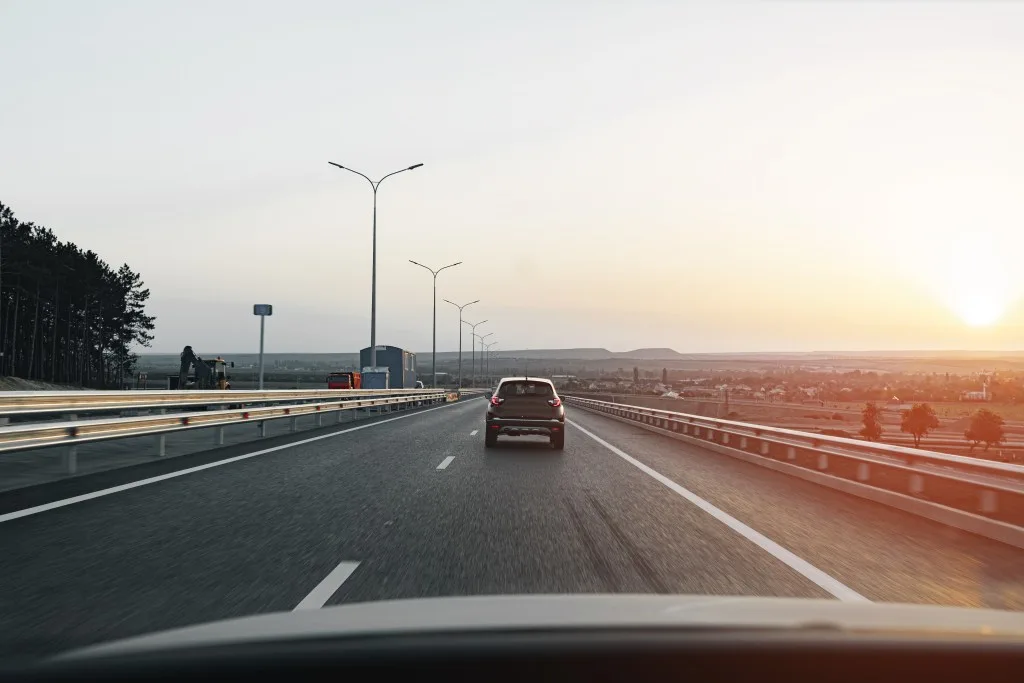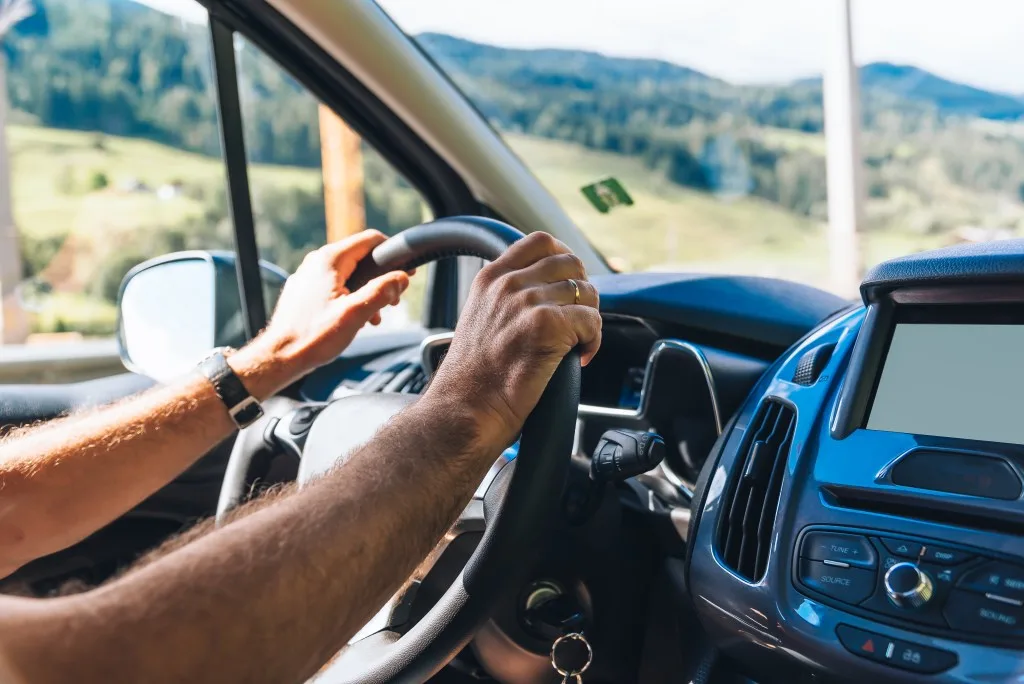Driving instructors typically remind students learning to drive that it is a privilege, not a right. If you fail to obey the rules of the road, law enforcement can take the privilege away from you.
Driving is extremely dangerous, and you shouldn’t take it lightly. State and local governments create driving rules and regulations to maximize road safety. However, some unwritten highway driving rules can help ensure you and other drivers have a smooth and safe experience.
Today, we’ll share ten unwritten rules for highway driving and why you should be following them. Buckle up, and let’s get started.
Is Highway Driving Easy?
Highway driving is one of the hardest types of driving experiences. Highways typically involve more vehicles, higher speeds, and constantly changing traffic conditions. Driving on an interstate requires confidence in your abilities, communicating with other drivers, and being aware of those around you.
Some highways and areas are easier to drive in than others. However, the more experience you gain, the better prepared you can be for whatever conditions come your way.
How Do You Prepare for Highway Driving?
The key to preparing for highway driving is preparation. If you drive in an unfamiliar area, know your route. Multitasking and driving don’t go together, especially when you don’t know the area. Study the road and see if you can find the best time to travel.
Typically, traffic will worsen during the morning and evening commuting times as people go and come home from work. If you plan a trip through a big city like Atlanta, you’ll want to avoid these times if possible.
These driving conditions can put even the most experienced drivers to the test.
You should always make sure your vehicle is in good condition. You don’t want something to go wrong while traveling at high speeds. Find a local mechanic you can trust to keep you and your vehicle on the road. It’ll be easier to relax while driving on the highway when not worried about your vehicle’s ability to get you safely from point A to point B.
Pro Tip: Avoid doing any of these 5 RV Driving Habits That Make People Instantly Dislike You.

10 Unwritten Rules for Highway Driving
As a driver, you need to know the written and unwritten rules for highway driving that you should follow. This will help you and other drivers on the road.
Don’t Drive in Blind Spots
Despite having multiple mirrors and windows, cars have many spots around the vehicle that the driver can’t see. These “blind spots” can be very dangerous as a driver might look in their mirrors and not see you. It could cause a serious accident if the car in front of you tries to change lanes or make another driving maneuver.
When passing a vehicle, do it quickly and efficiently. You want to spend as little time as possible in any blind spots. Not all drivers are as attentive as you’d hope for, so they may not see a car in their blind spot. If you find yourself in a blind spot due to the natural flow of traffic, change your speed.
Quickly slowing down or speeding up can get you out of the blind spot and back to safety.
Change Lanes as Soon as Possible
If you need to be in a specific lane, change lanes as soon as possible. Don’t be the person that waits until the very last second to get in the correct one. We’ve seen people crossing multiple lanes of traffic because they waited too long. This can become dangerous, especially if driving fast. Always maneuver as soon as possible to avoid a risky situation down the road.
Use Your Turn Signals
Your vehicle likely has turn signals, so use them. This is a written rule, and it is illegal to not use your blinker. Turn signals are how you communicate with the drivers around you and warn them of your intentions. If you need to change lanes, turn on your blinker to give them plenty of warning. Most drivers will typically make any adjustments necessary to allow you to change lanes or make a turn.
Drivers will appreciate you using your turn signal as it will likely give them a few extra seconds to know that you plan to reduce your speed if making a turn. This can help avoid a potentially dangerous rear-end collision because the driver behind you wasn’t aware of your intentions.

Use On-Ramps Correctly
On-ramps are there to get up to speed when entering a highway. Drivers entering a highway must yield to other traffic. The on-ramp traffic has the responsibility to adjust their speed to enter safely. Highway drivers should not have to slow down due to entering traffic. Take full advantage of the entire on-ramp to get up to speed, especially on interstates.
You should hit cruising speed when you exit the on-ramp. You don’t want to find yourself at 45 miles per hour while cars whiz past you at over 70 miles per hour. Following this unwritten rule can keep you and others safe while driving on the highway.
Keep Your Distance
Stay in your lane and keep a safe distance between you and the vehicle in front of you. Highway driving can be unpredictable, and you’ll need time to react to the changes around you. Always keep at least two car lengths between you and the car in front of you.
However, other drivers might use this space to change lanes if driving in heavy traffic. If this occurs, you’ll want to adjust your speed to increase the distance between you and the new car. It’s never a good idea to follow too closely to a vehicle. If something happens and you hit the vehicle, it will be difficult to convince law enforcement that it wasn’t your fault.
Drive the Speed Limit
The speed limit is a written rule, but we still want to remind you that it’s essential to follow while driving on the highway. A slow driver is equally as dangerous as a fast driver. You need to keep up with traffic flow to avoid causing an accident. Keep to the right if you drive slower than the traffic around you.
If you have a lead foot, stick to the left lanes and use the HOV when possible. However, keep your speed in check. Excessive speeding can cause serious accidents and take the lives of other drivers obeying the law. If caught speeding, you can receive a costly ticket and increase your auto insurance premiums.
Pro Tip: Want to drive in the HOV lane while towing your camper? We uncovered Can You Tow in the Carpool Lane?

Pay Attention
When driving, focus solely on driving. You need to pay attention to the road and what is happening around you. Put your phone in Do Not Disturb mode to limit distractions and keep it out of sight. Many states have stringent laws regarding using mobile phones while driving. No text message or phone call is worth endangering your life or the lives of others on the road.
Find a safe place to park if you must check your email, reply to a text, or make a phone call. You want to do all you can to stay safe while driving on the highway. Glancing away from the road and to your phone for even a second can cause a deadly accident.
Warn Other Drivers of Road Hazards
If you come across a road hazard, do your best to warn other drivers. Flash your lights at oncoming traffic and use your flashers to communicate slower traffic. Doing so can help improve safety and avoid a potentially dangerous situation.
However, refrain from flashing your high-beam lights into oncoming vehicles. It may not even be legal where you live to do so. Check your local rules for how to safely and legally warn other drivers.

Be Considerate of Other Drivers
The golden rule of highway driving is to treat other drivers as you wish to be treated. If more drivers obeyed this rule, we would likely see far less road rage. Being considerate of other drivers can make a huge impact on the flow of traffic.
If you see a vehicle trying to change lanes, make the necessary adjustments to help them get into the intended lane. However, you need to make sure you don’t worsen the situation behind you by unnecessarily blocking traffic. However, being considerate is something we would love to see from more drivers.
Always Be Prepared
Like the Boy Scout’s motto, you should always be prepared, especially when driving on the highway. Carry emergency supplies in your vehicle, have a spare tire and even a small tool bag. You never know what can happen on the highway, and you’ll want to have some resources just in case things go south.
If you plan to spend time in a desert or area with extreme temperatures, carrying several gallons of water can mean the difference between life and death. You don’t want to find yourself stranded in the middle of nowhere without any water. On the other hand, if you drive in an area with snow and extremely cold temperatures, keep warm blankets or warm clothes in your vehicle, just in case.
Be a Great Driver and Follow the Rules
If you follow these unwritten rules, you’ll improve your driving. While we can’t guarantee that you’ll always have a smooth ride or that other drivers will drive safely, following these rules will help give you the best shot. If highway driving makes you nervous, take a deep breath and do your best to relax. Drivers tend to make bad decisions when stressed or in tense situations. However, the more you practice and gain experience, the more comfortable you’ll likely become with driving.
Discover the Best Free Camping Across the USA
To be honest with you, we hate paying for camping. There are so many free campsites in America (with complete privacy).
You should give it a try!
As a matter of fact, these free campsites are yours. Every time you pay federal taxes, you’re contributing to these lands.
Become a FREE CAMPING INSIDER and join the 100,000 campers that love to score the best site!
We’ll send you the 50 Best Free Campsites in the USA (one per state). Access the list by submitting your email below: